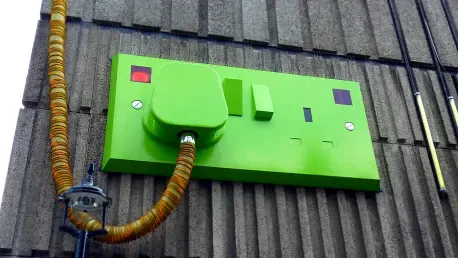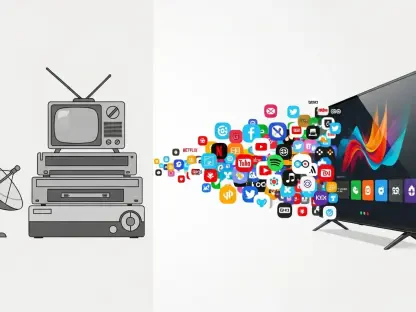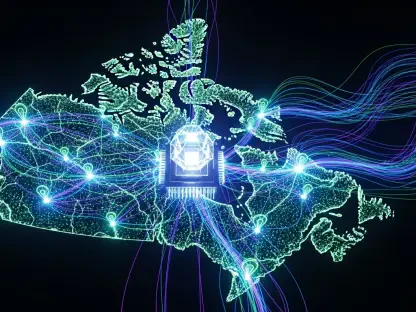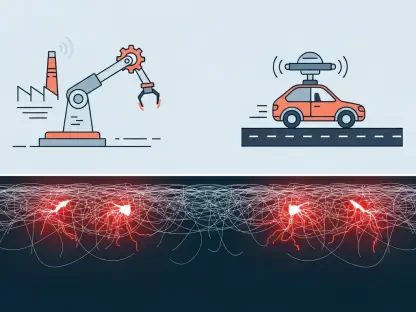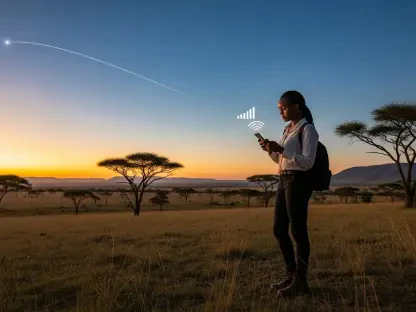In an era where high-speed internet is essential for everything from business operations to everyday tasks, hybrid fiber coax (HFC) technology becomes increasingly crucial. The evolution and technical advances in HFC are driven by the growing demand for better bandwidth speeds and reliable communication channels. This review delves into the transformation of HFC, powered by strategic developments and partnerships like those between Applied Optoelectronics Inc. (AOI) and Charter Communications. This collaboration aims to bolster Charter’s network capabilities, allowing for faster downstream speeds and more efficient network management.
Understanding Hybrid Fiber Coax Technology
Hybrid Fiber Coax technology consists of a combination of fiber optic cables and coaxial lines. By leveraging these two systems, HFC enables the transmission of high-bandwidth data over long distances while maintaining a robust final delivery through coaxial cables to end-users. Emerging from the need for improved data speeds and reliability, HFC bridges the gap between the high-capacity transmission offered by fiber optics and the extensive distribution network made possible by coaxial cables. Its core function lies in optimizing existing infrastructure, ensuring both speed and reliable connection.
In today’s tech-centric environments, HFC stands out for facilitating vast data capacities necessary for modern businesses, advanced media broadcasting, and personal use in homes. Its integration into current networks provides enhanced capabilities, making it an indispensable asset in advancing communication infrastructure globally.
Key Features and Developments
Fiber Optic Integration
Fiber optics serve as the backbone of HFC technology by offering unparalleled data transmission capabilities. By incorporating fiber optic systems into HFC networks, providers can significantly upscale bandwidth and speed performance. This enhancement plays a pivotal role in meeting consumer demand for lightning-fast internet access and gives HFC networks a competitive edge in the industry. The fine transmission quality provided by fiber optics ensures data fidelity, thereby improving user experience across various platforms.
Coaxial Network Capabilities
Coaxial cables remain a vital component in HFC configurations as they facilitate the delivery of high-speed internet to end-users. Their strength lies in maintaining and utilizing existing legacy network systems, contributing to cost efficiency while promising reliability. Working alongside fiber optics, coaxial networks ensure consistent service performance and adaptability in real-world applications.
Recent technological upgrades have allowed coaxial networks to improve their signal transmission capabilities further, showcasing their ability to support growing bandwidth requirements efficiently.
Recent Developments and Trends
Hybrid fiber coax technology is experiencing remarkable growth, influenced by continuous innovations and the need for more advanced solutions. The collaboration between AOI and Charter Communications serves as a quintessential example of these advancements, aimed specifically at maximizing network capacities. Charter’s multi-phase network upgrade focuses on integrating AOI’s cutting-edge 1.8GHz products and LoRaWAN-based remote management software, allowing the company’s network to keep pace with escalating data demands.
These developments not only expand existing HFC capabilities but also pave the way for DOCSIS 4.0 deployment, with ongoing efforts to achieve unprecedented speed efficiencies and streamline network operations. This innovative direction in cable technology highlights a turning point in adapting to future connectivity needs.
Applications of Hybrid Fiber Coax Technology
HFC technology is already seeing widespread applications across various sectors. Prominently utilized by industries where robust data distribution and reliable internet infrastructure are non-negotiable, its influence stretches from high-end commercial enterprises to residential broadband consumers seeking superior internet service. Such versatility underscores its critical role across technological landscapes.
Unique implementations in these sectors exhibit HFC’s adaptability and strength in expanding network horizons, catering to specific industry requirements, and further driving innovation in telecommunications.
Challenges and Limitations
Despite its robust capabilities, HFC technology faces several challenges that need attention. Technical issues, such as infrastructure compatibility and integration complexity, could impede progress. Additionally, regulatory conditions and market competition present significant hurdles that can influence widespread technology adoption.
Efforts to address these limitations focus on enhancing efficiency and compatibility while minimizing potential disruptions. Continued research and development are essential to overcoming these barriers, ensuring smoother transitions and broader application range.
Future Outlook
Looking ahead, the trajectory of hybrid fiber coax technology appears promising, with ongoing advancements suggesting potential breakthroughs that could redefine industry standards. Efforts centered on refining data transmission technologies and augmenting network capacities will likely dominate progress in the coming years. Industry collaborations remain crucial, as multi-partnership strategies are key to driving innovation and paving the way for more sophisticated HFC applications.
Ultimately, HFC technology’s impact on communication infrastructures and society at large could be profound, marking substantial advancements in how data networks operate and serve global needs.
Conclusion
In summary, the development of hybrid fiber coax technology signifies a major leap forward in the cable sector, backed by strategic expansions and alliances like those between AOI and Charter Communications. The shift toward direct sales and increased product compatibility showcases a strategic adaptation to prevailing industry trends. As these developments unfold, they present significant growth opportunities within the cable tech landscape, underscoring the critical nature of HFC technology in elevating connectivity standards across industries.
